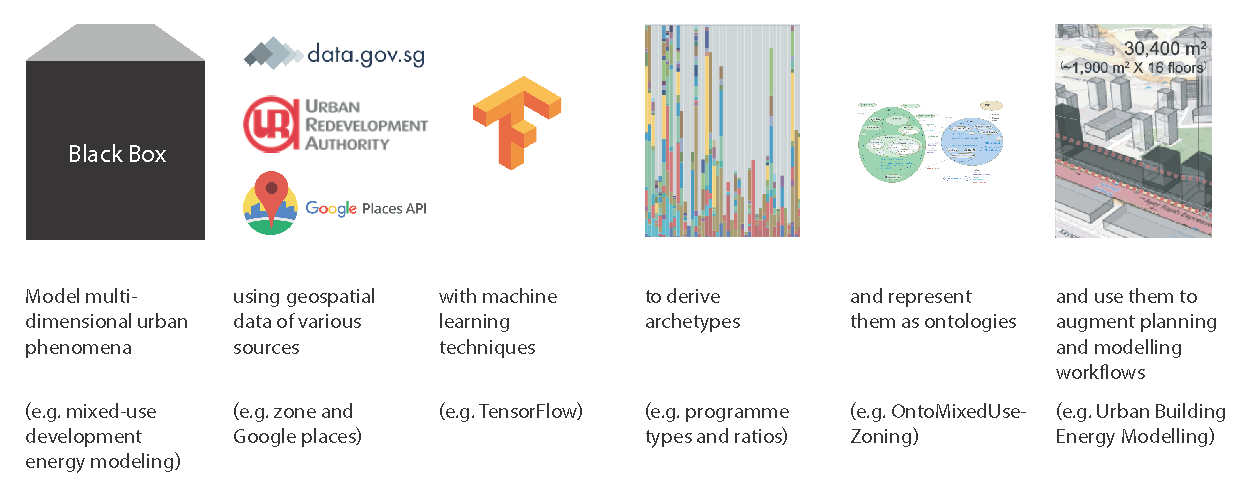Technical Report 285, c4e-Preprint Series, Cambridge
Defining archetypes of mixed-use developments for improved urban building energy modelling
Reference: Technical Report 285, c4e-Preprint Series, Cambridge, 2021
- We develop a methodology to understand mixed-use developments using master-planning data and Google Maps data.
- We formulate 163 mixed-use zoning archetypes in Singapore using machine learning methods.
- We demonstrate how these archetypes improve Urban Building Energy Modelling.
- We represent these archetypes as an ontology called ontoMixedUseZoning.
 Urban planning relies on the definition, modelling and evaluation of multidimensional phenomena for informed decision-making. Urban Building energy modelling, for instance, usually requires knowledge about a building's each use type's energy use profile and surface area. We do not have a detailed understanding of such information for mixed-use developments, which are gaining prominence in urban planning. In this paper, we developed a methodology to quantitatively define the characteristics of mixed-use developments using archetypes of programme profiles (ratios of each programme type) of a city's mixed-use plots. We applied our methodology in Singapore, resulting in 163 mixed-use zoning archetypes using Singapore's master plan data and Google Maps Place Type data. We also demonstrated how these archetypes augment the urban building energy modelling workflow for energy demand forecasts and energy supply system design. The archetypes definitions are represented and stored as a machine-readable ontology, improving adoption by other researchers and building towards an automated workflow. The archetypes have many potential urban planning applications beyond energy modelling.
Urban planning relies on the definition, modelling and evaluation of multidimensional phenomena for informed decision-making. Urban Building energy modelling, for instance, usually requires knowledge about a building's each use type's energy use profile and surface area. We do not have a detailed understanding of such information for mixed-use developments, which are gaining prominence in urban planning. In this paper, we developed a methodology to quantitatively define the characteristics of mixed-use developments using archetypes of programme profiles (ratios of each programme type) of a city's mixed-use plots. We applied our methodology in Singapore, resulting in 163 mixed-use zoning archetypes using Singapore's master plan data and Google Maps Place Type data. We also demonstrated how these archetypes augment the urban building energy modelling workflow for energy demand forecasts and energy supply system design. The archetypes definitions are represented and stored as a machine-readable ontology, improving adoption by other researchers and building towards an automated workflow. The archetypes have many potential urban planning applications beyond energy modelling.
Material from this preprint has been published in Environment and Planning B: Urban Analytics and City Science.
PDF (7.9 MB)



